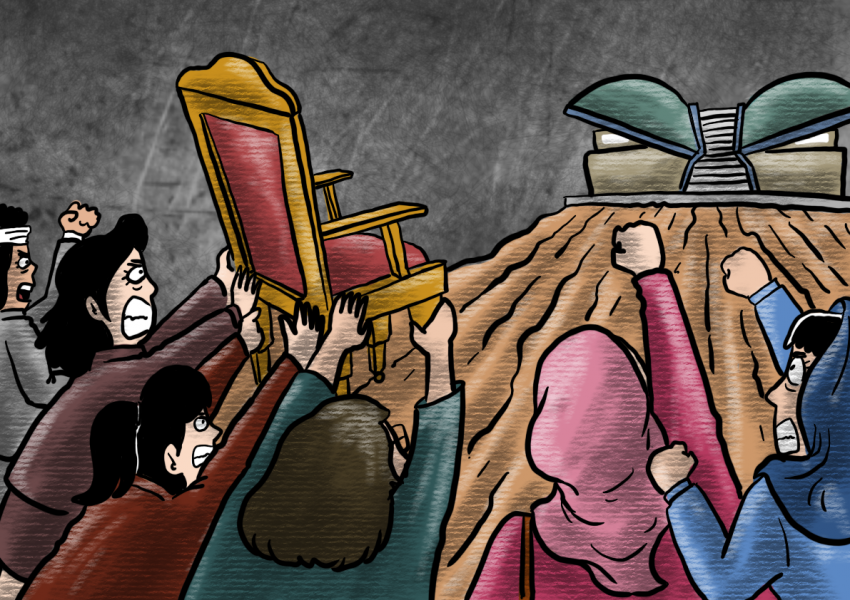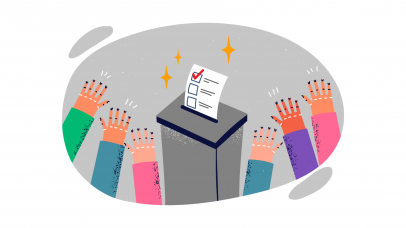
Women Face Tough Path to Become Legislators
The efforts to fulfil the 30 percent quota of women's representation in the parliament have become increasingly difficult since the General Elections Commission (KPU) issued regulation Number 10 of 2023 concerning the Nomination of Members of the House of Representatives, Provincial Legislative Council, and Regency / City Legislative Council.
Article 8 Paragraph (2) of the regulation states that if the calculation of 30 percent of the number of female candidates in each electoral district results in a decimal fraction behind the separator worth less than 50, then the calculation results are rounded down. On the other hand, the calculation results will be rounded up if the value is 50 or more.
Executive Director of the Association for Elections and Democracy (Perludem), Khoirunnisa Nur Agustyati, believes this provision can potentially suppress women's representation. This is because rounding down results in the nomination of legislative members for women by political parties will bring the results to be less than 30 percent. “Changes in the regulation were made to the more technical provision. Therefore, parties now become more relaxed [since they might not have to fulfil the 30 percent requirement]. Even when there is affirmative action, the quota has not necessarily reached 30% in the parliament. This is clearly a setback for the women's movement," she regretted.
A similar opinion was shared by Khoirunnisa, a lecturer in Political Science and International Relations, International Islamic University of Indonesia (UIII), Ella S. Prihatini. She assessed that Article 8 (2) PKPU Number 10 of 2023 was a form of democratic setback for women. "This is a setback that can be predicted in 2014. All parties have the same intention as their cadres have difficulty finding female candidates," she said.
Previously, women's representation in parliament has continued to be in the spotlight for the last two decades. Although the number of female legislators in the House of Representatives (DPR) has increased since 2004, 30 percent of representation has never been achieved. In fact, the active participation of women in politics is one of the important indicators of diversity and balance in a country's government system.
In the 2004 elections, the number of seats for female legislators in the House of Representatives was only 11.60%. In the following period, it increased to 18.04% in 2009. Then, there was a decrease of 0.72% in 2014 to 17.32%. Meanwhile, in the 2019-2024 period, it rose again to 20.52%.
Although the percentage of women went up by 3.2%, according to a Senior Researcher at the Center for Political Research, National Research and Innovation Agency (BRIN), Kurniawati Hastuti Dewi, it is still not enough. "The 2019 election was by far the highest achievement for the proportion of women after several elections. But this number is still not ideal. For decision-making, the percentage must reach at least 30-35%, so that critical mass can be felt and have an impact on the substance of political decisions," said Kurniawati referring to the UN Commission on the Status of Women.
"Issues about women that have been ignored, such as equal rights, women's control over their own bodies, childcare, and protection against sexual violence, can gradually be included in the public agenda and reflected in the national budget," she continued.
Data from the General Election Commission (KPU) related to the House of Representatives candidates for the 2019-2024 period in 8 electoral districts shows a difference of 1,578 people between the number of female and male candidates, consisting of 4,778 male candidates and 3,200 female candidates.
In the same period, the Indonesian Solidarity Party (PSI) became the party with the largest portion of female candidates compared to 15 other parties, reaching 272 people. The following was the United Development Party (PPP) with 233 female candidates and the Democratic Party with 223 female candidates.
Meanwhile, the Justice and Unity Party of Indonesia (PKPI) is the party with the least number of female candidates, with only 76 people. Even so, this number is quite large compared to the 61 male candidates.
Based on electoral districts, in the 2019-2024 elections, the North Kalimantan electoral district is the region with the least number of female candidates, namely 16 people, where each party carries one female candidate each. West Nusa Tenggara II is the constituency with the highest number of female candidates of 52, with PSI being the largest contributor of 7 people. Meanwhile, other parties evenly fill the quota of 3 to 4 female candidates.
According to the 2019-2024 election results, the number of female legislators who won seats in the House of Representatives only amounted to 119 people, while male legislators reached 456 people. Most female legislators come from the Indonesian Democratic Party (PDI) of Struggle with 26 people, out of a total Permanent Candidate List of 216 female candidates.
The Golkar Party has 19 female legislators in the House of Representatives. They compete with 217 other female candidates running from Golkar. The National Democratic Party (Nasdem) also has 19 female legislators elected from the House of Representatives. 221 female candidates.
However, if we look at the percentage based on the number of seats won, only the Nasdem Party fulfills 30% of the 60 total seats in the House of Representatives, which is 31.7%. The United Development Party was next, with 27.8% of female legislators from 18 total seats. Meanwhile, the proportion of women legislators in seven other parties is still below 25 percent. The smallest percentage is the National Mandate Party (PAN) with only 15.9% of the party's 44 total seats in the House of Representatives.
Different conditions are seen in electoral districts in several provinces. Of the 17 electoral districts in Indonesia, namely Aceh II, Bali, Jakarta III, Central Java I and Central Java XI are regions with all male legislators, followed by South Kalimantan I, South Kalimantan II, North Kalimantan, and Bangka Belitung Islands. There are also Riau Islands, Lampung I, West Nusa Tenggara I, West Papua, Riau I and Riau II.
On the other hand, 20 electoral districts have female legislators percentages of above 30%, such as Bengkulu, Jakarta I, Gorontalo, West Java III, and West Java IX. Then, West Java VI, West Java VII, West Java XI and Central Java III, followed by Central Java IV, Central Java IX, Central Java VIII and East Java I. Next in line are East Java IX, Maluku, North Maluku, East Nusa Tenggara II and West Sulawesi and South Sumatra.
Khoirunnisa reveals a number of factors that result in low representation of women in politics in Indonesia, including affirmative action policies, which in quantity encourage higher participation of women in politics, but only at the nomination phase, not in really in terms of legislative seats designated for female. "In practice, the 30% policy is only in the candidates' list, not in the total seats. This provision has not made much difference even though it has been implemented since the 2009 elections, because there are no sanctions for political parties that do not nominate women. The sanctions are only in KPU regulations," she said.
In the context of elections, she continued, affirmative action in Indonesia only applies to the election of House of Representatives and Regional Legislative Council members.
In fact, in the elections, there are many variables that make voters choose a woman, one of which is identity. "Looking at the previous elections, political parties only fulfill the administrative requirements. As long as the requirements are met, whoever the candidates are, the important thing is that they are women. So, in terms of numbers, the number of female candidates has increased, but it turns out that their background is also from the elite groups.” She said efforts to boost women's representation in the House can be improved by encouraging political parties to prepare female cadres properly so that their candidates have the experience in making regulations.
Meanwhile, Ella S. Prihatini encouraged the formulation of regulations that could bind political parties to implement affirmative action. Political parties not only need to fulfill the quota during registration but also nominate female cadres who have the capacity and capability to be legislators. "The fact is that political parties like to pick and choose, if they rely on the women-vote-women scheme, it is not effective because it was already done before affirmative action existed. Parties complained that women did not want to be nominated, saying only a few women have good electability. So, the key is affirmative action, parties are required to give women a good number on the candidate list because the number also affects the chance of winning," she continued.
In addition, Ella said, various initiatives need to be taken to introduce female candidates to the public in the hope that voters can choose the right candidate so that they vote based on clear and sufficient information.
"Unfortunately in Indonesia, voters generally pick candidates without doing research first. We also can't rely on people who do not find out about the candidates first before voting. Not to mention the people who are apathetic. Based on the data, the number of voters in legislative elections is less than during presidential elections. This means that people don't really invest their time to vote. The growing apathy characterizes that democracy in Indonesia is stagnant. That's actually not good at all," she explained.




